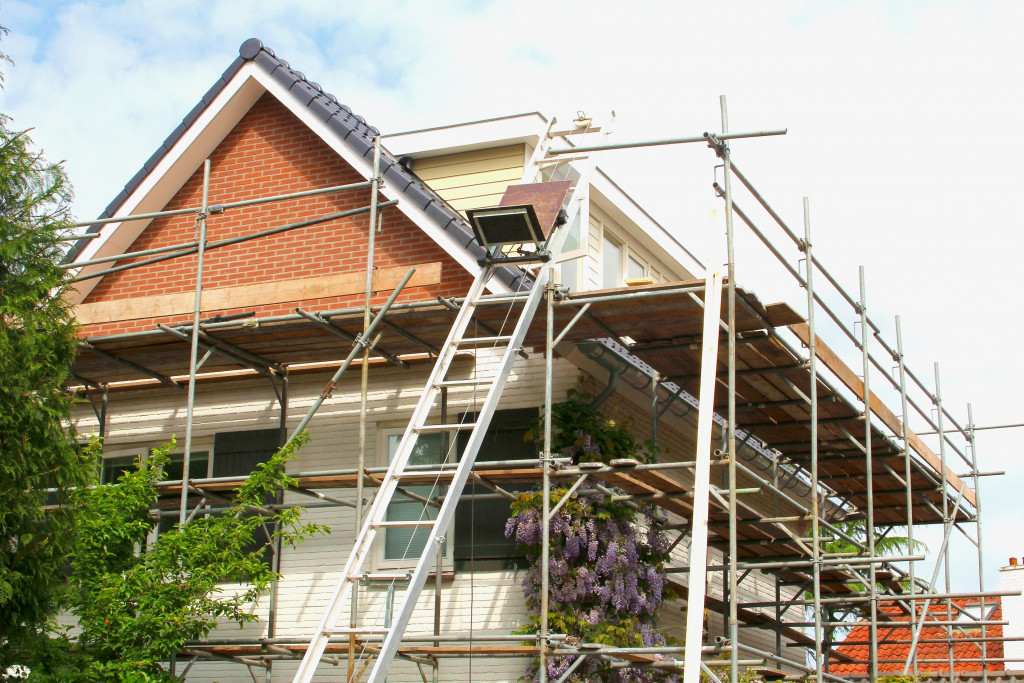If you’re a homeowner looking to build, repair, or renovate, there are certain terms that you should try to become familiar with. Here are some of them.
CSCS Blue Card
When researching contractors, one term you may come across is the CSCS Blue Card. This card is issued by the Construction Skills Certification Scheme (CSCS).
The Construction Skills Certification Scheme (CSCS) ensures that all workers in the construction industry have the necessary skills, knowledge, and qualifications for their job role. The CSCS administers several types of cards, including the popular green card, which shows that an individual has gained an NVQ or other recognized qualifications. The CSCS blue card indicates that an individual has passed a regulation test and is qualified to work on a construction site.
As such, this certification is especially important because it shows that your contractor or tradesman has been properly trained. Additionally, because having a valid CSCS blue card indicates that a worker is familiar with current health and safety regulations, they can keep everyone involved safe while working in your home.
It’s worth noting that if you’ve found a company or a person you’d like to work with whose card has expired or is past its validity, don’t worry. They can easily book CITB blue card tests today through the convenience of the internet.
Modular Construction
One of the most popular home construction methods is modular construction, a type of prefabricated building. Modular construction involves constructing sections or modules in a factory setting and then transporting them to the actual building site, where they are placed on top of a foundation. This type of building allows for reduced waste since there is less material used at the job site due to prefabrication and fewer trips needed to store materials. Additionally, there is less disruption during the build since much of the work takes place away from the job site.
This offers several benefits over traditional methods. For one, it can reduce costs since you don’t have to pay for as many materials at once or wait for them to arrive on-site – this also helps speed up the entire process. Additionally, it allows for greater precision because each module is created in a factory environment where all components are subjected to rigorous quality control measures. Finally, modular constructions offer greater flexibility regarding design options; you can customize your modules before they are shipped off-site or even change up designs mid-build if needed.

Lath and Plaster
Lath is a thin strip of wood nailed to wall studs or ceiling joists as part of the interior construction process. The lath provides an even surface for attaching the plaster, which is applied over the lath in several layers. Each layer must be completely dry before adding another layer, so this process takes quite some time.
Plaster is ideal for wall and ceiling coverings because it is extremely durable and long-lasting. It also provides excellent sound insulation, which can help keep noise levels down in your home. When properly finished, plaster walls are very easy to clean with a damp cloth or sponge. Plaster also adds thermal mass to your walls, which helps to regulate indoor temperatures throughout the year.
Lath and plaster walls have traditionally been used in older homes since their introduction centuries ago. Still, they are becoming more popular again in modern homes due to their durability and classic aesthetic appeal. It’s particularly well suited for bathrooms since it’s water-resistant and easy to clean; however, homeowners may choose to use lath and plaster anywhere in their home where they want to add a bit of extra charm or atmosphere without compromising on durability or practicality.
Laminates
Laminates are a type of composite material that consists of multiple layers fused together under pressure and heat. The most common laminates used in home construction are flooring, countertops, and cabinets. In the context of flooring, laminates consist of a high-density fiberboard core layer covered by a decorative layer made from photographic images that resemble real wood or stone.
The primary advantage of using laminate flooring is that it is much cheaper than natural wood floors while still providing the same look and feel. Additionally, since laminate flooring is extremely durable and scratch-resistant, it can last for many years with little maintenance required. However, laminate flooring does have some drawbacks—namely, it cannot be refinished like natural wood floors and may fade over time if exposed to direct sunlight for extended periods. Additionally, laminate flooring tends to feel colder on bare feet than natural wood floors due to its lack of insulation capabilities.
As a homeowner, it’s important to be familiar with home construction terminology so you can comprehend what’s happening when building, renovating, or repairing your own home. Knowing these key terms will not only help you communicate more effectively with contractors but also give you peace of mind knowing that you can understand and handle any issues that may arise during construction or repairs.



